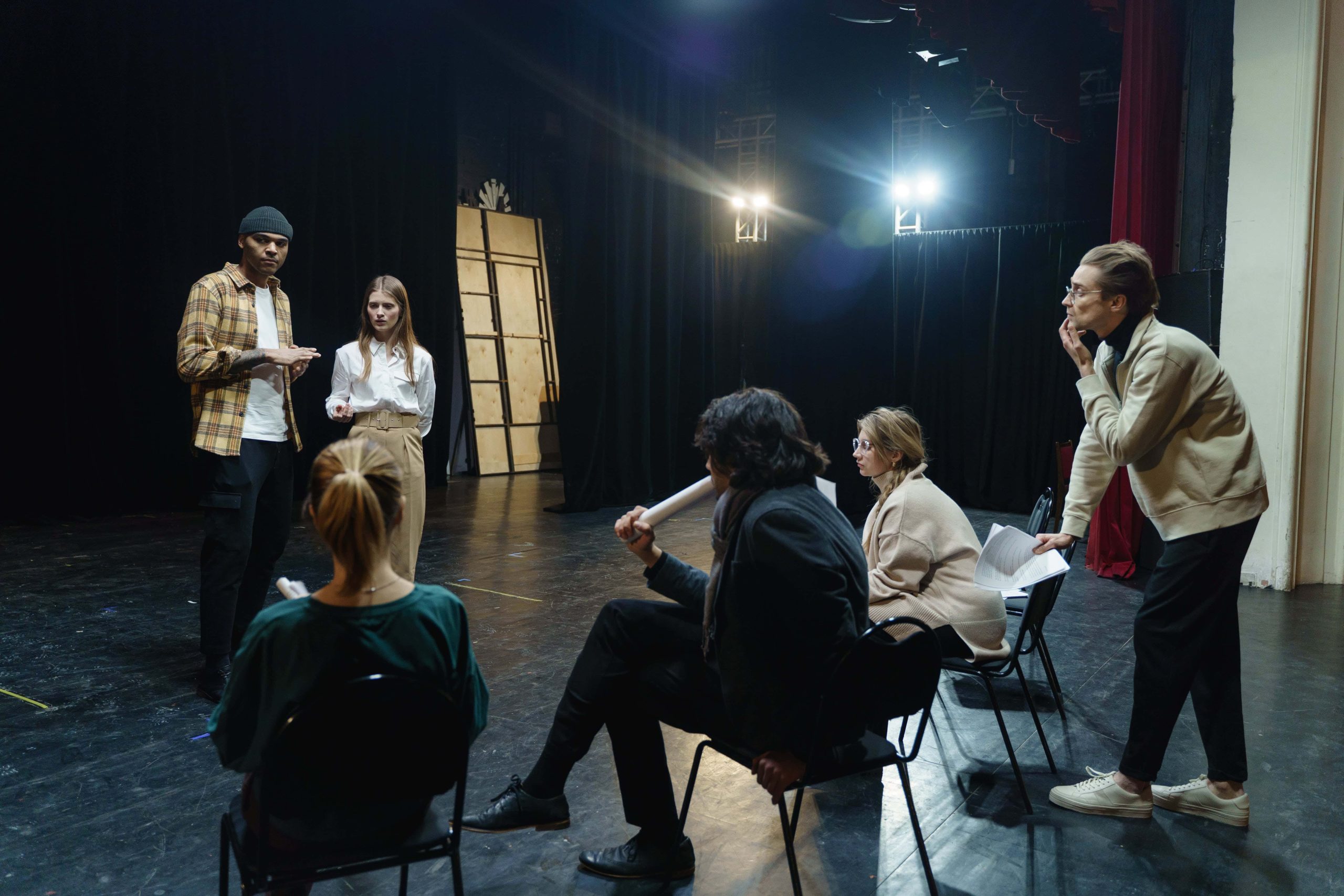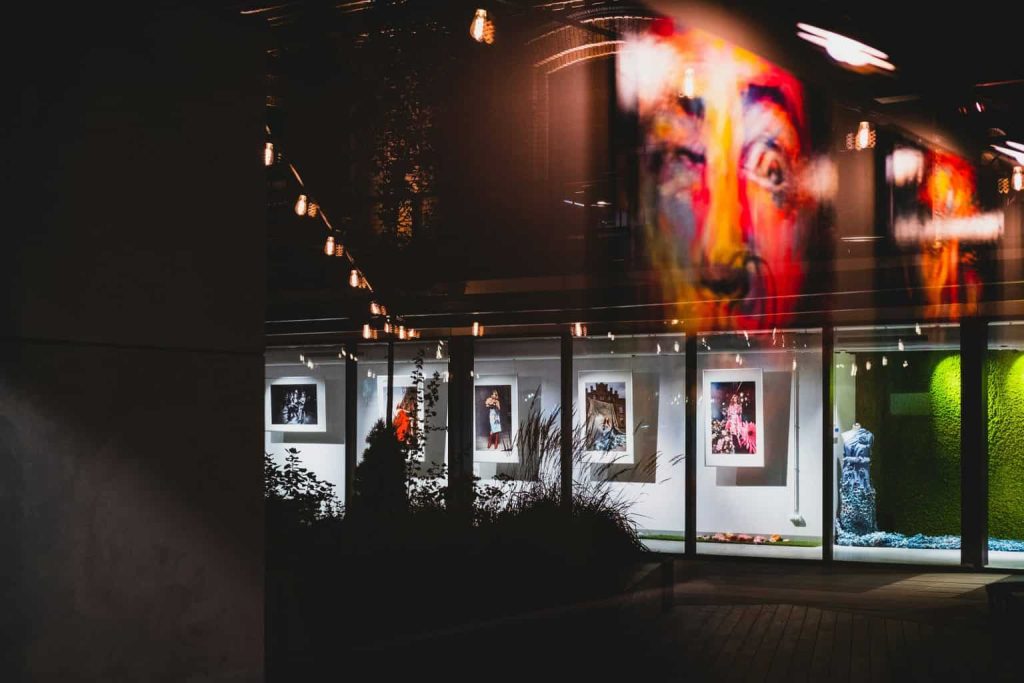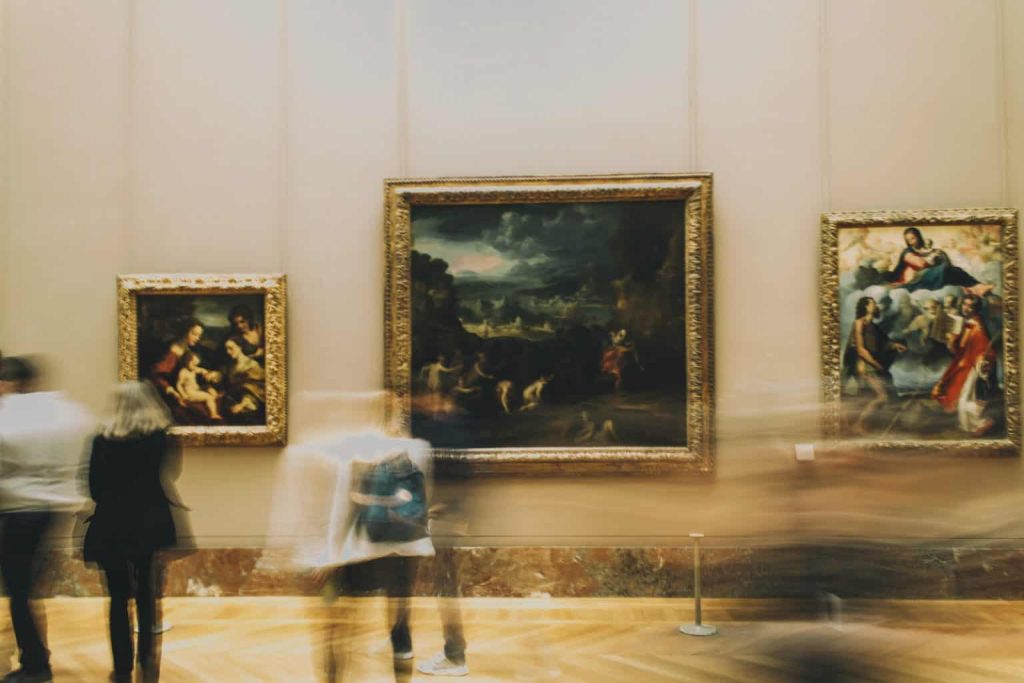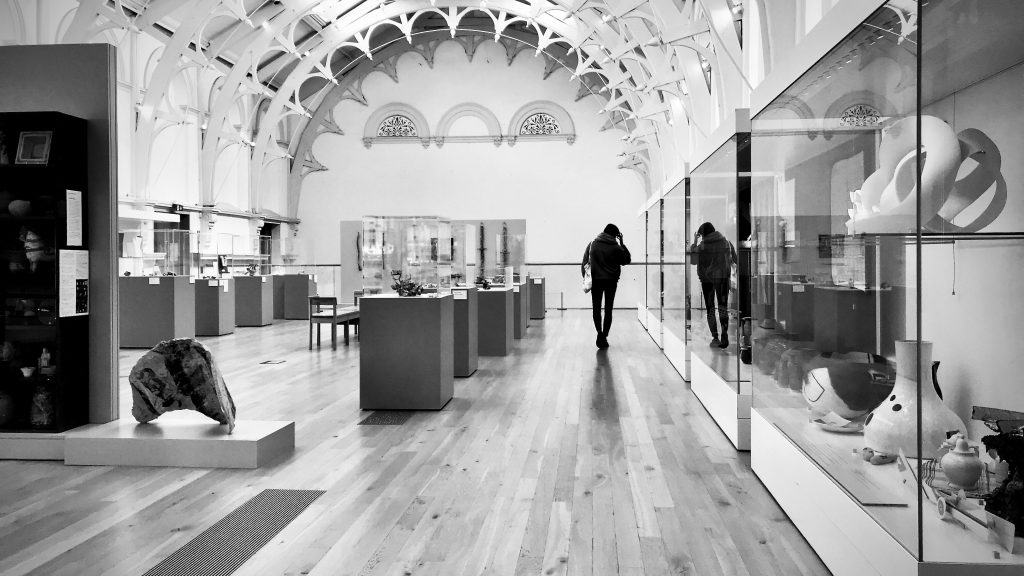
29 Jan Collaborative Art Events for Promotion in 2024
Collaborative art events have become dynamic hubs within the ever-changing landscape of the art world, offering platforms that go beyond traditional exhibitions by seamlessly integrating diverse artistic talents. Not limited to mere showcases, these events serve a dual purpose, spotlighting both the artworks and the collaborative process itself. This article delves into the profound impact of these gatherings, exploring how they stimulate artistic innovation, cultural dialogue, and community engagement. From interactive installations to immersive performances, collaborative art events redefine artistic expression, encouraging artists to step beyond individual boundaries and embrace collective creation, thereby shaping both the art scene and broader cultural narratives.
Impact of Collaborative Art Events

Photo by Sacre Bleu
Increased Reach and Exposure
Collaborative projects in the art world serve as powerful conduits for expanding an artist’s reach and exposure. By combining the followers and fan bases of multiple artists involved, these collaborative events create a synergistic effect that captures the attention of a wider and more diverse audience. This heightened visibility not only increases the chances of individual artists gaining recognition but also opens doors to potential media coverage and online buzz. The collaborative spotlight becomes a potent tool for artists to showcase their unique styles and perspectives, fostering a deeper connection with art enthusiasts.
Enhanced Creativity and Innovation
Collaboration within the artistic realm serves as a catalyst for heightened creativity and innovation. The intersection of diverse ideas, techniques, and perspectives creates a fertile ground for artistic experimentation. When artists join forces, they break free from the confines of individual thinking, pushing creative boundaries collectively. This shared exploration often results in the development of groundbreaking artworks that captivate audiences by offering fresh and unconventional perspectives. The collaborative process becomes a breeding ground for innovation, fostering an environment where artistic expression flourishes through collective imagination.
Artist Community Building and Networking
Beyond the canvas, collaborative art events play a pivotal role in nurturing a sense of community among artists. These platforms provide more than just opportunities for showcasing artwork; they become hubs for building relationships, offering mutual support, and fostering collaboration among artists. The camaraderie developed during collaborative projects extends beyond the event itself, creating lasting connections within the artistic community. These collaborations also serve as platforms for professional development, mentorship, and the exchange of ideas, contributing to the strengthening of local art scenes. Ultimately, collaborative events help weave a rich tapestry of interconnected artists, fostering a supportive and vibrant artistic community.
Economic Benefits
Collaborative art events are not only enriching culturally but also carry significant economic benefits. By attracting attention and visitors, these events stimulate tourism and investment in the hosting location. The economic ripple effect extends to artists, who often benefit from increased sales, commissions, and grants. As the collaborative projects inject creativity into the local community, they contribute to the overall economic vitality. The infusion of artistic energy becomes a catalyst for growth, making collaborative art events a win-win scenario for both artists and the broader community. The economic sustainability of the local art scene is bolstered, ensuring a positive cycle that encourages further artistic endeavors and community engagement.
Organizing Collaborative Art Events

Photo by Diogo Fagundes
Concept and Theme Development
The foundation of successful collaborative events lies in the thoughtful development of a compelling concept and theme. This involves identifying a unifying idea that resonates with both artists and potential audiences. The chosen theme should strike a balance, being broad enough to accommodate diverse artistic interpretations while also providing clear goals and objectives for the event. A well-crafted concept sets the stage for a cohesive and engaging collaborative experience, serving as a guiding thread that ties together the various artistic contributions.
Artist Selection and Recruitment
Curating a diverse and inclusive group of artists is essential for creating a rich and dynamic collaborative environment. The selection process involves reaching out to both established and emerging artists, ensuring a mix of styles and skills that contribute to the overall tapestry of the event. Clear guidelines and expectations are crucial in fostering a harmonious collaboration, enabling artists to understand their roles and responsibilities within the collective project. This thoughtful curation ensures a synergy among participants, enhancing the potential for innovative and impactful artistic outcomes.
Venue and Logistics
The choice of venue plays a pivotal role in the success of collaborative events. Selecting a venue that aligns with the scale and theme of the event contributes to the overall ambiance and experience. Securing funding and sponsorships is essential to cover costs and provide support for the participating artists. Detailed logistical planning, including considerations for equipment, materials, and technical support, is necessary to ensure a seamless execution of the collaborative project. Adequate attention to these elements enhances the overall efficiency and effectiveness of the event.
Promotion and Outreach
Effective promotion is key to maximizing the impact and attendance of collaborative events. Utilizing various channels such as social media, press releases, and partnerships helps broaden the outreach. Engaging marketing materials that reflect the theme and concept build anticipation and excitement among the audience. Strategic promotion not only increases awareness but also establishes a connection between the event and its potential attendees, fostering a sense of anticipation and curiosity.
Event Execution and Management
The successful execution of a collaborative event relies on meticulous planning and management. Establishing a clear schedule that accommodates the various stages of the collaborative process is essential. Effective communication among artists, organizers, and attendees ensures that everyone is informed and engaged. Creating a safe and enjoyable experience for all participants is paramount, requiring attention to details such as security, accessibility, and overall event logistics. A well-managed event contributes to a positive experience for both artists and attendees, reinforcing the success and impact of collaborative endeavors in the artistic community.

Photo by Pea
Conclusion
In the dynamic realm of art promotion, collaborative events serve as powerful catalysts for artistic growth and community enrichment. Beyond traditional exhibitions, these gatherings amplify artistic impact by fostering increased reach, enhanced creativity, and strong artist community bonds. The economic benefits, including tourism and local investment, make collaborative art events a win-win for both artists and the communities they engage. The organization of such events demands careful curation, from crafting compelling themes to selecting a diverse array of artists. Attention to venue selection, logistical planning, and strategic promotion are vital elements in ensuring a seamless and successful execution. As collaborative art events continue to evolve, they underscore the significance of fostering innovation, supporting local artistic scenes, and creating immersive experiences that transcend the boundaries of traditional exhibitions.
Key Takeaways
Impact of Collaborative Art Events
- Increased Reach and Exposure: Broadens audience and network reach, leading to media coverage and online buzz.
- Enhanced Creativity and Innovation: Cross-pollination of ideas and techniques fosters innovation, producing unique artworks.
- Artist Community Building and Networking: Fosters a supportive atmosphere, facilitating community and professional development among diverse artists.
- Economic Benefits: Attracts tourism and investment, stimulating the local economy through sales, commissions, and grants.
- Cultural Enrichment: Promotes cultural exchange and understanding, enriching the artistic landscape and fostering dialogue.
Organizing Collaborative Art Events
- Concept and Theme Development: Establishes a compelling theme aligned with artist and audience interests, setting clear goals.
- Artist Selection and Recruitment: Ensures inclusivity by curating a diverse group of artists with clear guidelines and expectations.
- Venue and Logistics: Selects an appropriate venue, secures funding, and plans logistics meticulously for success.
- Promotion and Outreach: Maximizes outreach through strategic use of various channels, generating anticipation for the event.
- Event Execution and Management: This requires meticulous planning, clear scheduling, effective communication, and ensuring a safe and enjoyable experience.
FAQs
How do collaborative art events benefit individual artists?
Collaborative art events offer numerous benefits to individual artists. Firstly, they significantly expand an artist’s reach by providing exposure to new audiences that may not have otherwise encountered their work. This exposure can lead to increased recognition and appreciation for the artist’s unique style and perspective. Additionally, collaborative events often involve working with other artists, fostering a sense of community and providing opportunities for creative exchange. Through collaboration, artists can explore new techniques, ideas, and approaches, ultimately enriching their artistic practice. Furthermore, participating in collaborative art events can open doors to economic opportunities, as artists may gain access to new markets, potential patrons, and commissions that arise from the exposure gained during these events.
What makes a successful collaborative art event?
The success of a collaborative art event hinges on several key factors. Firstly, a compelling and unifying theme serves as the foundation for the event, providing a cohesive framework for the participating artists. Diverse artist selection is crucial to ensuring a range of perspectives and styles that contribute to the overall richness of the event. Meticulous planning is essential to address logistical concerns, ensure a smooth execution, and create an enjoyable experience for both artists and attendees. Effective promotion is equally critical, as it generates interest and draws a diverse audience. Ultimately, a successful collaborative art event is marked by the seamless integration of these elements, creating an atmosphere that fosters creativity, engagement, and appreciation for the arts.
Can virtual platforms be effective for collaborative art events?
Virtual platforms have proven to be highly effective for collaborative art events, exemplified by initiatives like the Fusion Arts Fair. In the digital age, these platforms break down geographical barriers, enabling artists from around the world to come together and collaborate. Virtual events offer a level of accessibility that traditional, location-based events may lack, allowing a broader and more diverse audience to participate. The convenience of online collaboration also facilitates the exchange of ideas and artistic contributions, leading to innovative outcomes. While the virtual format may differ from physical events, it provides a unique and valuable space for artists to connect, share their work, and engage with a global audience, making it an increasingly important and effective platform for collaborative art events.
Take a historical tour through the development of art collections and discover various exhibition techniques that have influenced how works of art are shown and understood throughout history through “The History of Art Collections and Their Display” guide.

